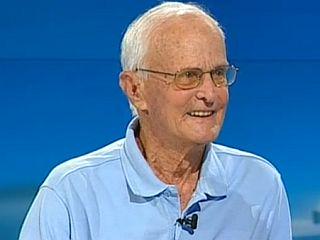
Slovenians tend to be proud of their athletes - talented men and women who help to make their country well-known far beyond its borders. But even among the 20th century’s greatest sportsmen, track-and-filed sprinter Marko Račič holds a special place. Not only is he Slovenia’s oldest living Olympian; he is still passionate about sport.
Born in the region of Bela Krajina not far from the Croatian border in 1920, Račič quickly discovered a talent for sprint. He was particularly good at 100- and 200-meter dashes and he won the first official race in which he had ever competed. After sprinting for several Slovenian clubs as a young man, he moved to Belgrade, Yugoslavia’s capital, after World War II.
There, Račič quickly became the Yugoslav champion in 100 and 200 meters, as well as in hurdles, and set several Yugoslav records. But his most prestigious moment came in 1948, when he competed in the first postwar Olympics.
Just three years after the end of the war, Europe was still picking up the pieces from the conflict that tore it apart, and the London Games were an organizational challenge for everyone involved -- the defeated countries were purposefully excluded. Yugoslavia had just turned Communist; Račič and other Yugoslav participants had to be accompanied by an official minder; they also spent several days traveling to London by train.
In London, Račič made it to the semifinals in the 400-meter dash. He never came close to winning a medal, but just by competing with the world’s best, he put Yugoslavia – and Slovenia – on the map.
He also participated in the European Championships and the Balkan games before retiring from active competition. But his athletic career was just beginning. He spent most of the 1960s as the manager and coach of the Yugoslav women’s track-and-field team. During that time, several members of the team became European champions in various disciplines.
Račič also became a track-and-field judge, a career which he continued well into his old age. He was also active as an organizer of sporting events, and was a member of the committee which made the 1984 Sarajevo Winter Games a success. In 2008, he was officially recognized by the International Olympic Committee for his promotion of sport, and four years later, the Slovenian Olympic Committee invited him to the London Olympics. There, he met William Roberts, against whom he had competed 64 years earlier. In 2013, Račič became Slovenia’s oldest living Olympian.
These days, he remains an inspiration to many not just because of his impressive career, but also because of his vitality in old age. In 2015, he renewed his drivers’ license for another three years, and today, at the age of 96, he is still active in sports associations and has recently published his autobiography.


































































